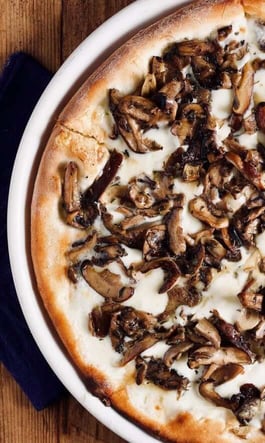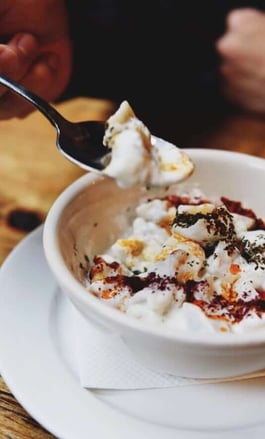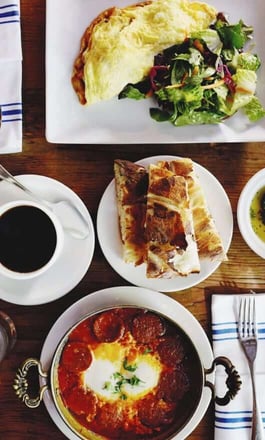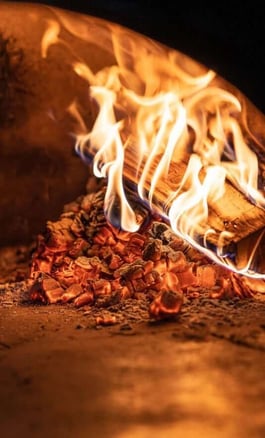Kofte Kebab from Turkey
Anyone who has ever strolled through a Turkish street market has experienced the aromatic tapestry that wafts through the open air to tantalize one’s appetite. Unable to resist the temptation, tourists of these Turkish and Iranian bazaars are usually beckoned by the sizzling sounds of kofte kebabs. These savory grilled meats on a stick, laced with herbs and spices, provide the ideal opportunity to sample a taste of the Middle East.
What is Kofte?
There are likely as many variations on the kebab as there are Turkish grandmothers, each adding her unique secret twist to the base recipe. Most kebabs with which one is familiar are made by threading chunks of meat onto skewers, sometimes alternating the meat cubes with vegetables. Kofte kebabs, the traditional coveted delicacy throughout Turkey and Iran, differ in that they are created with ground meat around the stick. Kofte kebabs can best be described as a meatball mixture shaped like a large cigar. Kofte, a term that originated in Persia, translates to mash. Before the days of meat grinders or food processors, the meat would be diced and then mashed with a mortar and pestle to achieve the consistency for shaping these kebabs.
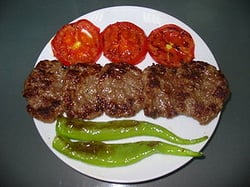
Türkçe: Akçaabat Köftesi (Photo credit: Wikipedia)
Ingredients
In Turkey, the kofte kebab is typically made from ground lamb, chicken or beef. The ground meat is mixed with such herbs as mint and parsley and spices that can include cinnamon, cumin, saffron, turmeric or paprika. Onion and garlic may also be incorporated into the mixture. Many recipes call for using an egg, bulgur or rice to serve as a binding agent. For vegetarian diners, kofte kebabs can be produced with lentils, potato or bulgur in lieu of the ground meat.
Preparation
Once the ingredients have been combined together, handfuls of the mixture are then packed firmly around a skewer into an oval log shape. Kofte kebabs are best when grilled in the authentic tradition over of wood or charcoal fire, but they can be cooked in a household broiler also.
How It Is Served
Kofte kebabs present the palate with a glorious array of flavors and texture. The outside surface of the kebab introduces a slight crustiness that gives way to a rich, meaty experience as one savors the complex harmony of spices and herbs.
Kofte kebabs are traditionally served over rice, couscous, pita, naan or other flat bread. Additional accompaniments may include a salad or a grilled vegetable such as tomatoes, onions or eggplant. Yogurt sauce or other optional condiments for this meal may be offered as well.
Today, there are nearly three hundred variations of kofte kebabs, each one influenced by a particular cooking technique or village. As in all other cuisines throughout the world, each country lends its own contribution to create a new version that marries the culinary attributes of two cultures. Kofte kebabs are being created in nations such as Greece, India, Morocco and some Asian countries. The bustling street vendors of Turkey, however, still offer the enticing authenticity that has long been enjoyed as the defining epicurean experience of the Middle East.



